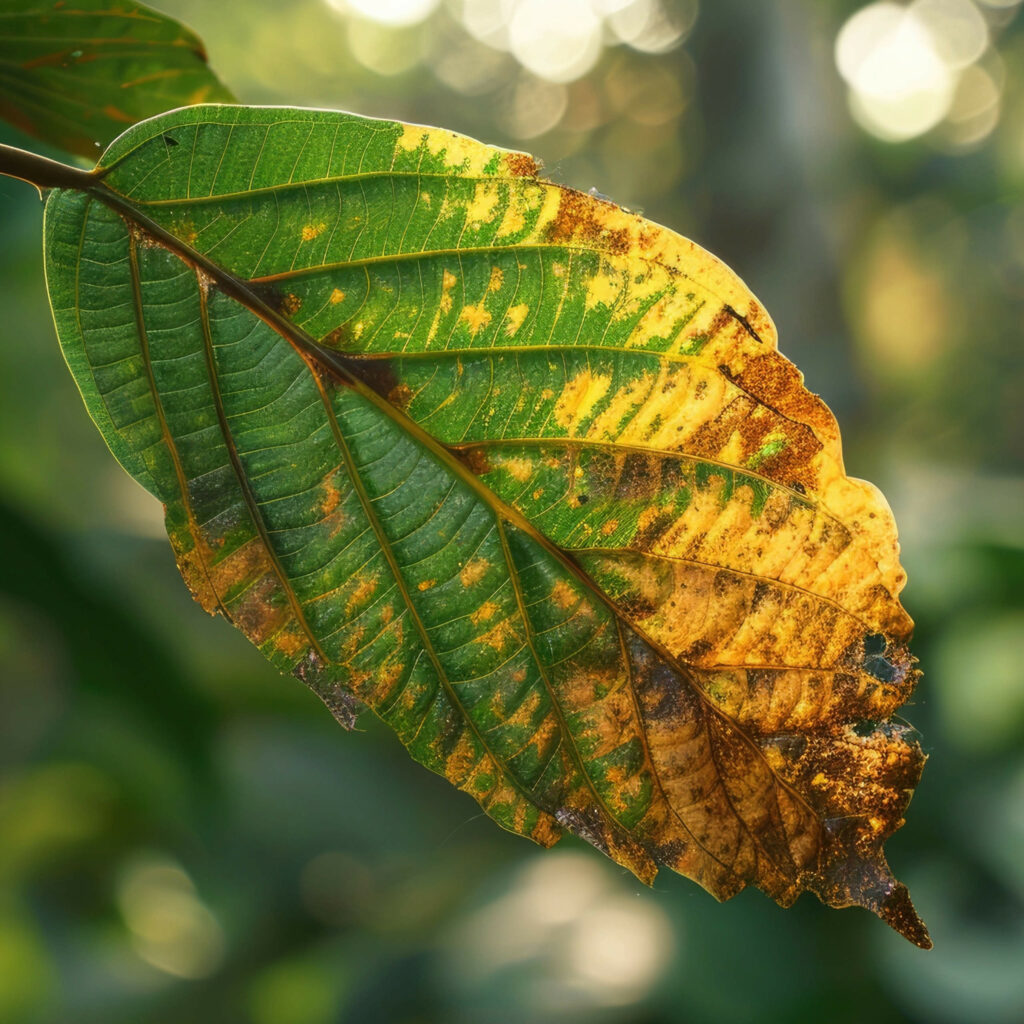Neem oil is widely recognized as an effective natural pesticide, valued for its ability to control pests such as aphids, spider mites, and whiteflies. However, some users report an unintended side effect: leaf burn, characterized by browning, scorching, or wilting foliage. This phenomenon can lead to misconceptions about the quality of neem oil. In reality, the issue stems not from inherent flaws in the product, but from its interaction with environmental factors and application methods. Below, we explore the causes of leaf burn and affirm that neem oil itself remains a dependable tool when used correctly.
Light Amplification and Heat Concentration
Neem oil, derived from the seeds of Azadirachta indica, is a vegetable oil with a viscous consistency. When applied to plant leaves, it forms a thin film that can enhance the effects of sunlight. This coating may concentrate solar radiation, particularly during periods of direct exposure, elevating leaf surface temperatures and causing cellular damage akin to solar scorching. This effect is most pronounced when applications occur under intense midday sun, before the oil has an opportunity to dry or dissipate. The resulting burn is a physical response to light and heat, not an indication of a defective product.
Excessive Concentration

Improper dilution is a frequent cause of leaf damage. Standard recommendations advise a dilution rate of 0.5–1% (approximately 5–10 mL per liter of water) with an emulsifying agent, such as a mild detergent, to ensure uniform dispersion. Exceeding this concentration—by applying undiluted oil or overly strong mixtures—can overwhelm plant tissues. High concentrations may obstruct stomata, the microscopic pores essential for gas exchange, impairing photosynthesis and leading to necrosis or scorching. This is particularly evident on sensitive species with thin leaves. The fault lies in application, not in the neem oil’s formulation.
Environmental Conditions
Temperature and timing significantly influence outcomes. Applications during warm conditions—above 27°C (80°F)—or under peak sunlight increase the likelihood of burn. The oil retains heat against the leaf surface, accelerating oxidative stress before evaporation or absorption can occur. Research and field observations indicate that applications in cooler, low-light periods, such as early morning or late evening, mitigate this risk. The oil’s behavior under these conditions underscores that environmental management, rather than product quality, determines success.
Plant Susceptibility
Certain plants exhibit greater vulnerability to neem oil applications. Species with delicate or thin leaves, such as herbaceous annuals or juvenile growth stages, are more susceptible to damage. This heightened sensitivity amplifies the effects of sunlight, heat, or concentration errors, resulting in visible burn symptoms. In contrast, hardier plants with thicker cuticles often tolerate the oil without issue. This variability reflects botanical differences, not inconsistencies in the neem oil itself.
Neem Oil’s Integrity Remains Intact
It is critical to emphasize that leaf burn does not indicate a problem with neem oil as a product. Its active compounds, including azadirachtin, target pests effectively without inherent phytotoxicity under proper conditions. The observed damage arises from external factors—light amplification, excessive dosage, suboptimal timing, or plant-specific traits—all of which are within the user’s control.
Guidelines for Safe Application
To prevent leaf burn while leveraging neem oil’s benefits, adhere to the following practices:
Dilution: Use a 0.5–1% solution (5–10 mL per liter of water) with an emulsifier.
Timing: Apply during early morning or late evening to avoid high temperatures and direct sunlight.
Testing: Conduct a patch test on a small section of the plant and monitor for 24 hours.
Storage: Keep neem oil in a cool, dark environment to preserve its stability.
Neem oil remains a reliable and valuable asset in integrated pest management. Leaf burn, when it occurs, is a manageable outcome of application dynamics, not a reflection of the oil’s quality. By understanding and controlling these variables, users can maximize its efficacy while safeguarding plant health.